

Проект «Голоса еврейских местечек. Могилевская область».פיתוח קשרי התרבות בין העמים של ישראל ובלרוס
|
|---|
Поиск по сайту |
|
MainNew publicationsContactsSite mapVitebsk regionMogilev regionMinsk region |
BELYNICHI. THE STORY OF THE HORRIBLE DAYS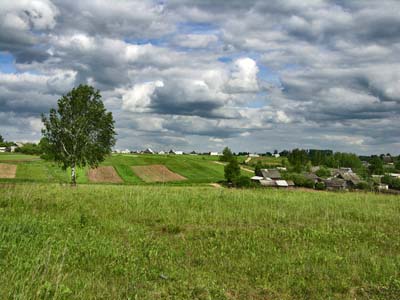 Execution site of Belynichi Jews in Salotopka.
Execution site of Belynichi Jews in Salotopka.
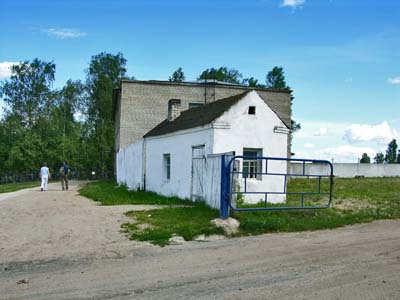 Execution site near former tractor station.
Execution site near former tractor station.
From the very first days of the Nazi occupation in Belyhichi region fascists began murdering the local population. All in all, 3313 people were shot, hanged, burnt alive or sent to Germany into slavery. The Jewish ghetto in Belynichi was located in what is now Engels and Kirov Streets. The ghetto existed until December 12th 1941. On that day all the ghetto prisoners were told they would be moving to the town of Esmony, which was located 12 kilometers away from Belynichi. However, they were not taken to Esmony – they were shot 3 kilometers away from Belynichi. The victims were made to undress themselves and lie face down in a ditch. When the bottom of the ditch was filled the Nazis shot the people. And so it happened until all the people were killed. The shootings and burglaries continued throughout the German occupation. The executions also took place in Salotopka, “the Jewish cemetery” and Belynichi machine-tractor station. 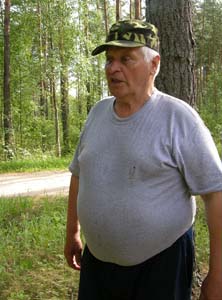 Anatoly Antonovich Orlovsky.
Anatoly Antonovich Orlovsky.
Anatoly Antonovich Orlovsky, born in 1937: I was born in Neropl. At the beginning of the war I was still a child, so I do not remember well what was happening. My father, Anton Orlovsky, was working for an organization which bought vegetables from the local population and then sold them around the country. One of the workers in the organization was a Jewish man, Aron. When the Nazis invaded, he did not escape – he had a family that he would not leave. I know that the women, children and old people, were executed at Mhi, while the Jewish men were brought here, to Neropl. There were more than a hundred men. Aron was among them. They were made to stand in line on the edge of a ditch and shot. After the war some Jews came from Leningrad, the relatives of the victims. They hired people to help them rebury the bodies. Yad Vashem 03/4729 Polina Alexandrovna Stelmakova, born in 1917. At the time of the war I was 15. We lived near Belynichi. We did not evacuate because we could not predict such things would be happening here. I remember Nazi policemen came with a letter, which said that we had to move to a new place. We had to leave on December 12th. Before that they kept us in a ghetto for 5 or 6 days. There were so many people in the ghetto that we had to sleep standing. The ghetto was guarded by policemen. … A special group of Germans arrived, about 60 people. There were dogs as well. Women were walking, carrying children in their arms. They were told they would be taken to Esmony. However, most people could guess they were being taken to die. The ditch had been dug out in advance. … I was already at the place where people were being shot. Mother was begging me: “Tell them that you are Russian!” (I had a document with a Russian name). I began shouting. I was shouting I was Russian. One of the policemen walked me out of the line and said: “Surprising. We have a Russian girl here.” One of the Germans checked my identity certificate and they let me go. On the way to the village the policeman said to me: “Even if you are not Russian, you will live – you do not look Jewish.” And so I was saved… 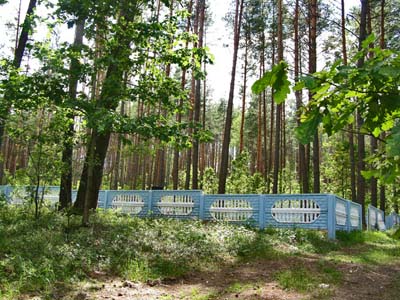
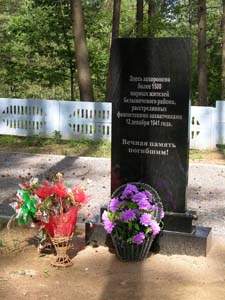 Execution site in Mhi near the village of Zadrudskaya Sloboda.
Execution site in Mhi near the village of Zadrudskaya Sloboda.
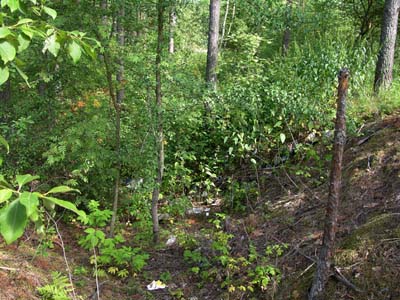 Execution site in the village of Neropl.
Execution site in the village of Neropl.
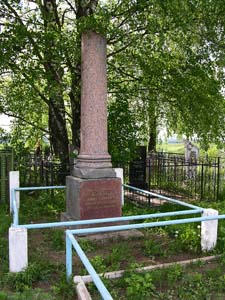
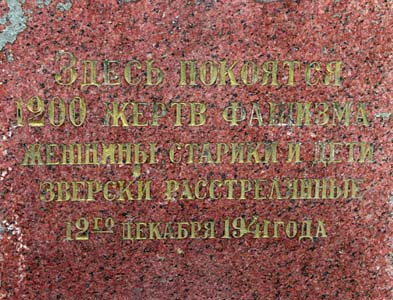 Memorial after reburial of Belynichi Jews at the Jewish cemetery.
Memorial after reburial of Belynichi Jews at the Jewish cemetery.

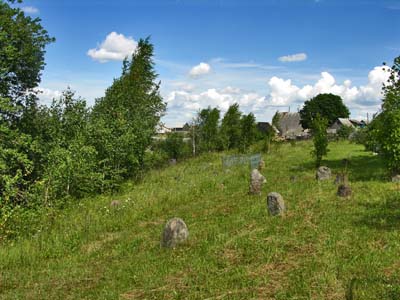
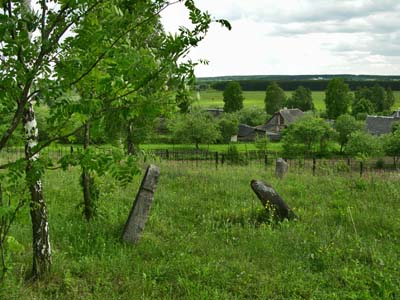 The Jewish cemetery.
The Jewish cemetery.
Photos taken by Alexander Litin |
|||
|
|
Jewish settlements in Mogilev regionMogilev• Antonovka• Batsevichi• Belynichi• Belynkovichi• Bobruisk• Byhov• Chausy• Cherikov• Dashkovka• Dribin• Esmony• Glusk• Golovchin• Gorki• Gory• Grozdianka• Hotimsk• Kirovsk• Klichev• Konohovka• Kostukovichi• Krichev• Krucha• Krugloye• Lenino• Lubonichi• Martinovka• Moliatichi• Mstislavl• Naprasnovka• Osipovichi• Rodnia• Rudkovschina• Samotevichi• Sapezhinka• Selets• Shamovo• Shepelevichi• Shklov• Slavgorod• Staroselie• Sukhari• Svisloch• Vereschaki• Zaverezhie• Zhilichi• |
Main |
New publications |
Contacts |
Site map |
Vitebsk region |
Mogilev region |
Minsk region |